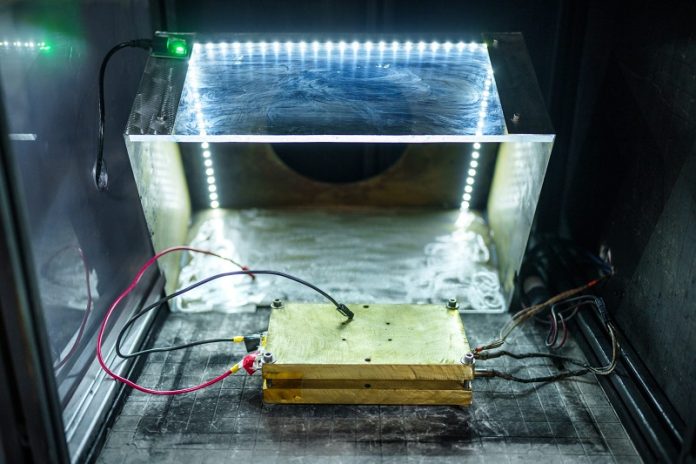
Electric vehicle (EV) batteries are powerful but can sometimes fail quickly and even catch fire without much warning, putting passengers at risk.
To improve EV safety, scientists at Sandia National Laboratories are developing ways to detect battery failures earlier, giving drivers enough time to safely park and exit the vehicle.
While most EVs have battery management systems to monitor performance, these systems aren’t focused on catching safety risks early.
Current technology checks battery temperature and voltage, but these signs often appear too late—sometimes only when a fire is about to start or has already begun.
Alex Bates, a member of Sandia’s battery safety group, explained that battery fires can vary. Some failures happen gradually, while others cause the battery to overheat and ignite very quickly. “The battery starts heating uncontrollably, ultimately resulting in a fire,” he said.
Sandia’s team, led by battery safety expert Loraine Torres-Castro, is focused on giving drivers more time to react.
“Our goal is for the system to provide an early warning, allowing time to park safely and exit the vehicle,” Torres-Castro said. Eventually, they want to integrate this early warning system directly into the vehicle’s dashboard.
Inside the BATLab
To develop this new technology, the team has been testing commercial diagnostic tools at Sandia’s Battery Abuse Testing Laboratory (BATLab). This facility allows researchers to test individual battery cells and whole battery packs to find the best ways to detect different types of failures.
“Our objective is to test various diagnostics available on the market to see which ones can give early warnings for different battery issues,” Torres-Castro said. “There’s no one-size-fits-all solution, as each battery type and design may need a specific approach.”
Sandia has a unique advantage for this work due to its broad expertise. The team includes experts in material science, electrochemistry, and engineering, all working together to understand why and how batteries fail. Earlier this year, Sandia’s research was published in the Journal of the Electrochemical Society, sparking interest in the field of battery safety for EVs.
Expanding Beyond EVs
The implications of this research go beyond just EVs. Torres-Castro mentioned that Sandia is working with an organization in South Korea to explore using these safety methods in grid energy storage systems, which use large-scale batteries to store power.
What’s Next for Battery Safety?
Looking ahead, the Sandia team aims to improve their detection technology even further. One focus is to use machine learning to analyze battery data more accurately, ensuring faster and more reliable warnings that reduce false alarms.
They’re also working on advancing sensor technology so that, in addition to warning the driver, the sensors can trigger the battery’s cooling system to prevent overheating.
As part of their next steps, Sandia will bring EV battery packs into the lab to test current diagnostic tools at different scales and under different conditions. Torres-Castro and Bates are excited to continue pushing the boundaries of battery safety research.
“It’s very exciting to be at the forefront of practical battery safety, where our work will extend beyond the lab,” Torres-Castro said. Bates added, “We’re always excited about the science.”
Source: Sandia National Laboratories.



